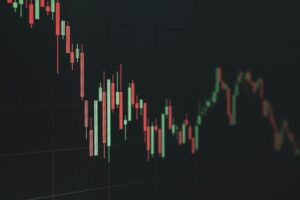The equity view: Justin Thomson, head of international equity at T. Rowe Price comments:
We are emerging from a highly unusual period in which one market (the US) and one sector (technology) dominated returns. This dominance has skewed investor positioning and valuations. Many investor portfolios are heavily exposed to US equities, while virtually every sector in non‑US equities is currently cheaper than its US equivalent.
Valuations alone are not a compelling reason to invest in a particular market or asset class, but they do provide a useful starting point when determining the potential for long‑term returns. Within international (non-US) markets, value stocks have been trading at a discount to growth stocks. This is likely to change as we expect non‑tech capex to surge amid widespread factory automation and the relocation of supply chains.
The fastest‑growing firms in the period following the GFC were US tech companies, whose business models were built around intangible assets. We expect the period ahead to be marked by a higher‑trend level of demand for tangible assets, supporting sectors such as industrials, energy, and materials, which are typically value-oriented.
Global ex-US small‑caps usually traded at a premium to large‑caps, but in 2024, this premium disappeared following several years of Covid‑related disruption and supply chain challenges. In our view, international small‑caps offer the potential to deliver stronger earnings per share (EPS) growth than international large‑cap peers in the period ahead as the economic environment improves. History shows that following periods of earnings decline, earnings growth for small‑caps has typically exceeded large‑caps. We expect this to occur again on this occasion, but this time coming from a point of extreme valuation support for small‑caps that should help compound investor returns.
Turning to Asia, the world will likely need to get used to a structural downshift in China from the 5% to 6% growth rates seen over the past few decades. A further challenge to Chinese growth may come if Trump delivers on his promise to impose more tariffs on China. In the meantime, the combination of compressed valuations, bottom-up innovation, and the potential for strong countertrend rallies means that opportunities to invest in China will continue to arise.
We believe the medium‑term bull case for Japan still holds as Japanese firms switch focus from market share to profit maximisation. Notwithstanding South Korea’s recent political instability, it has sought to emulate Japan’s success in boosting stock valuations with a corporate governance drive. Tax incentives have been offered to businesses that prioritise shareholder returns, while the new ‘Korea ValueUp Index; will list firms that have improved capital efficiency. These are significant structural opportunities available at attractive prices.
The bond view: Kenneth Orchard, head of international fixed income at T. Rowe Price
We anticipate continued volatility in the wake of the US presidential election, leading credit spreads to widen from the unusually narrow levels experienced through most of 2024. As a result, all‑in yields in sectors with credit risk would remain attractive even if high‑quality government bond yields decrease as the Fed and other global central banks cut rates.
However, I do not foresee a global recession in the next 12 months, so the spread widening should be relatively modest as rate cuts and lower energy prices continue to support the consumer and economic growth. Credit spreads could tighten again in 2025 as the uncertainty clears and investors become confident in the economy’s health.
High yield bonds should produce attractive income, but thorough credit analysis and selection is critical. If short‑term interest rates decrease, creating steeper yield curves, non‑investment‑grade bonds could actually generate more income than floating-rate loans.
Corporate bonds with the lowest credit ratings in the investment‑grade universe – BBB on the S&P Global Ratings scale – could also produce healthy incomes as a result of their high credit spreads relative to other investment‑grade issues.
Casting a wider net, emerging market corporate and sovereign bonds should benefit from a favourable growth environment in developing countries, where many central banks are well into their rate‑cutting cycle. Emerging markets are well positioned to generate higher growth than developed European markets, for example. The credit quality of emerging market corporate bonds has steadily moved higher over the past several years.
Global growth could surprise on the upside. In this scenario, markets would likely price in rate hikes to battle inflation, resulting in a steeper yield curve as intermediate‑ and longer‑term yields move higher. The risk of an inflation resurgence is high enough to consider including a small allocation to inflation‑adjusted bonds, such as treasury inflation-protected securities, in a diversified portfolio.














